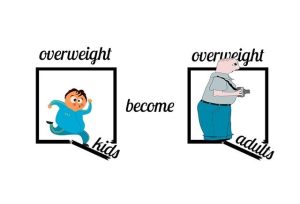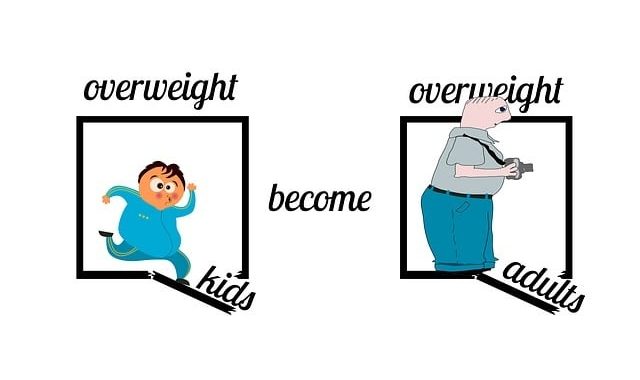
Childhood obesity has become a growing concern worldwide, with its prevalence steadily increasing over the past few decades. To address this alarming issue, healthcare professionals and organizations have continually worked towards developing comprehensive guidelines for the treatment of pediatric obesity.
In recent years, the American Academy of Pediatrics (AAP) has taken a pivotal role in shaping these guidelines, sparking discussions and controversies surrounding their recommendations.
New Childhood Obesity Guidelines:
In a pivotal move, the American Academy of Pediatrics (AAP) unveiled revised pediatric obesity guidelines in 2023.
This updated framework is a response to the evolving landscape of childhood obesity, integrating cutting-edge research, clinical insights, and field advancements.
The 2023 guidelines present a nuanced and evidence-based strategy, reflecting the AAP’s commitment to enhancing healthcare providers’ ability to effectively address and treat pediatric obesity.
This comprehensive approach signifies a crucial step forward in combating the complex challenges associated with childhood obesity, providing a contemporary and informed foundation for medical professionals dedicated to the well-being of children and adolescents.
AAP Obesity Guidelines Controversy:
The AAP’s efforts to establish unified obesity guidelines encountered controversy as certain recommendations sparked debates within the medical community.
Concerns raised by healthcare professionals and experts questioned the appropriateness of specific guidelines, shedding light on the complexities inherent in addressing childhood obesity.
These controversies underscore the necessity for continuous discussions and refinements to improve the guidelines, recognizing the dynamic nature of the field and the importance of adapting strategies to effectively tackle the multifaceted challenges associated with pediatric obesity.
Ongoing dialogue within the medical community remains crucial in refining approaches and ensuring the guidelines align with the diverse needs of healthcare providers and the children they serve.
Best obesity awareness products
�
AAP Clinical Practice Guidelines:
The AAP’s initiative to formulate unified obesity guidelines faced contention, stirring debates among healthcare professionals and experts. Criticism focused on specific recommendations, revealing the intricate challenges of addressing childhood obesity.
These controversies emphasize the ongoing need for discussions and refinements to enhance the guidelines, acknowledging the dynamic nature of the field. Recognizing the multifaceted nature of pediatric obesity, continuous adaptation of strategies is essential.
The evolving dialogue within the medical community is paramount for refining approaches and ensuring guidelines are responsive to diverse healthcare provider needs.
It’s crucial that these guidelines evolve in tandem with emerging research, clinical insights, and societal changes to foster effective interventions and contribute to the collective effort in mitigating the impact of childhood obesity on the health of the younger population.
Best obesity awareness products
Pediatric Obesity Guidelines 2023:
The 2023 pediatric obesity guidelines from the AAP represent a significant leap forward in addressing the multifaceted challenges associated with childhood obesity.
Going beyond a mere focus on physiological aspects, these guidelines embrace a holistic approach that recognizes the complex interplay of psychological and social factors contributing to obesity in children and adolescents.
By acknowledging the intricate web of influences, the guidelines pave the way for a more comprehensive understanding and treatment strategy.
The emphasis on holistic care underscores the importance of considering a child’s mental and emotional well-being, family dynamics, and societal influences in combating obesity effectively.
This shift in perspective aligns with the evolving understanding of pediatric obesity as a nuanced and interconnected issue.
It not only broadens the scope of interventions but also emphasizes the importance of tailored, patient-centered approaches that address the unique circumstances of each child, promoting more effective and sustainable outcomes in the battle against childhood obesity.
Best obesity awareness products
Recommendations for Treatment of Child and Adolescent Overweight and Obesity:
The 2023 pediatric obesity guidelines from the AAP underscore a commitment to personalized and family-centered care, recognizing the distinctive circumstances and challenges faced by each child and adolescent.
Prioritizing tailored interventions, the recommendations encompass a diverse array of strategies. Dietary modifications take center stage, emphasizing the importance of balanced and nutrient-dense diets, while increased physical activity is encouraged to promote overall well-being.
Behavioral therapy plays a crucial role in addressing the psychological aspects of obesity, emphasizing long-term behavior change.
Additionally, the guidelines acknowledge that in some cases, pharmacological treatment may be necessary, highlighting a comprehensive and nuanced approach to treatment.
The guidelines’ emphasis on a multidisciplinary approach reflects the understanding that pediatric obesity is a complex issue requiring collaboration among various healthcare professionals.
Nutritionists, psychologists, and other specialists play pivotal roles in addressing the diverse aspects of obesity.
By fostering teamwork, the guidelines strive to provide a comprehensive and holistic framework that ensures the most effective and sustainable outcomes for children and adolescents struggling with overweight and obesity.
Best obesity awareness products
Pediatric Obesity Nutrition Guidelines:
The Pediatric Obesity Nutrition Guidelines of 2023 highlight the pivotal role of nutrition in managing childhood obesity, providing comprehensive recommendations for dietary interventions.
A key emphasis lies in promoting balanced and nutrient-dense diets tailored to the individual needs and preferences of each child. The guidelines recognize the importance of acknowledging unique dietary requirements, ensuring that interventions are not only effective but also sustainable in the long term.
Furthermore, the guidelines advocate for active family involvement in creating a supportive environment conducive to cultivating healthy eating habits.
Recognizing that family dynamics significantly influence a child’s dietary choices, these guidelines encourage collaborative efforts to instill positive habits.
By fostering a family-centered approach, the guidelines aim to create an environment where healthy eating becomes a shared and sustainable practice, contributing to the overall well-being and successful management of pediatric obesity.
The integration of family support ensures that dietary interventions are not only clinically effective but also culturally sensitive, promoting lasting positive changes in the nutritional habits of children and adolescents.
Best obesity awareness products
Conclusion:
The evolving landscape of pediatric obesity treatment guidelines reflects the ongoing commitment of healthcare professionals to address this pressing public health issue.
While controversies may arise, the overarching goal remains to provide evidence-based, effective, and compassionate care for children and adolescents struggling with obesity.
The 2023 AAP guidelines serve as a valuable tool for clinicians, offering a comprehensive and updated framework to guide their efforts in combating childhood obesity and promoting the health and well-being of the younger generation.
Further Reading:
New pediatric guidelines on obesity in children and teens
Updated obesity treatment guidelines for children and teens
Clinical Practice Guideline for the Treatment of Obesity and Overweight in Children
FAQs:
What are the treatment recommendations for childhood obesity?
The 2023 pediatric obesity guidelines prioritize personalized and family-centered care, incorporating dietary modifications, increased physical activity, and behavioral therapy. Recommendations stress the importance of balanced, nutrient-dense diets tailored to individual needs. In some cases, pharmacological treatment may be considered. The guidelines underscore a multidisciplinary approach, emphasizing collaboration among healthcare providers, nutritionists, psychologists, and specialists for comprehensive care.
What are the new pediatric guidelines for treating obese children?
Released in 2023, the AAP’s pediatric obesity guidelines prioritize personalized, family-centered care. Emphasizing holistic approaches, they address physiological, psychological, and social factors contributing to obesity. The recommendations advocate for balanced, nutrient-dense diets, increased physical activity, and behavioral therapy. In certain cases, pharmacological treatment is considered. The guidelines stress a multidisciplinary approach, encouraging collaboration among healthcare providers and specialists for comprehensive and effective treatment.
